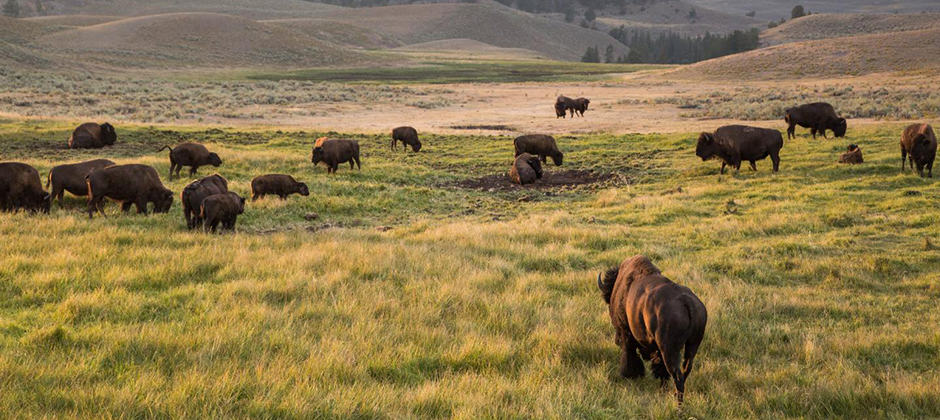Share this article
Bison don’t surf – they make waves
Bison aren’t simply grazing as they move across the meadows of Yellowstone National Park. They are engineering the environment, manipulating the forage on the landscape and changing the way spring green-up occurs, researchers recently found, essentially rolling back spring as the migrate through the high country.
Their presence makes for longer, greener plant life in the spring, they found, and more nutritious grasses.
“We’ve been studying bison in Yellowstone for over a century, but this idea that bison set the terms of springtime, through their movements and grazing, was something that’s never been confirmed before in Yellowstone — or anywhere else,” Chris Geremia, bison biologist for Yellowstone National Park, told the University of Wyoming. Geremia was lead author on the study published in the Proceedings of the National Academy of Sciences.
Their findings raise the question of what effect they had on the vast grasslands where they roamed by the tens of millions before European settlement. “Today there is growing effort to restore bison to habitats they once roamed,” Geremia says. “As we seek to reestablish bison, this study shows us what large bison herds are capable of when they are allowed to seek out the best forage and move freely across large landscapes.”
When bison head to the high country in the summer, researchers found, they graze so intensively that the grasses revert to an earlier stage of growth, essentially returning springtime conditions.
In the study conducted by Geremia; his Yellowstone colleague Rick Wallen; and researchers from the University of Wyoming, the University of Montana and the U.S. Geological Survey, team members used GPS collars to track migrating bison for 13 years, quantifying their foraging habits, taking measurements on the plants, collecting bison dung and fencing them out of some areas.
They found that areas where bison grazed heavily were more productive than areas where they kept bison out. Even NASA satellites can detect the difference between areas that are lightly grazed and heavily grazed.
“The green-up was earlier, faster, more intense and lasted longer,” Matthew Kauffman, unit leader of the U.S. Geological Survey’s Wyoming Cooperative Fish and Wildlife Research Unit, told the university.
Rather than “surf the green wave,” as biologists sometimes describe the migration patterns of animals like deer and elk that follow the sprouting of vegetation, bison allow the green wave to pass, the researchers found, then create their own second spring.
“They start to surf, but then they stop,” Geremia told the Atlantic.
The conclusion surprised the researchers. “We knew that bison migrated, we figured they followed the green wave, but we didn’t know that their influence on the landscape could affect the entire way that spring moves through the mountains and valleys of Yellowstone,” said co-author Jerod Merkle, the Knobloch Professor in Migration Ecology at the University of Wyoming.
Header Image: Bison don’t just graze as they roam across Yellowstone. They are ecosystem engineers, resetting early spring conditions. ©Neal Herbert/National Park Service








